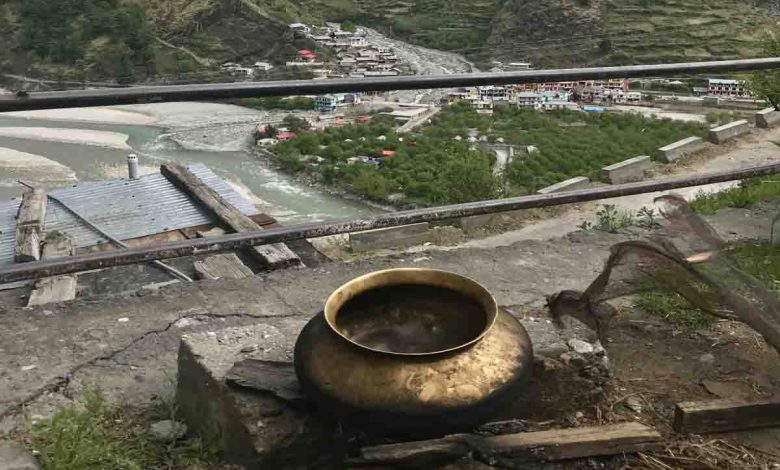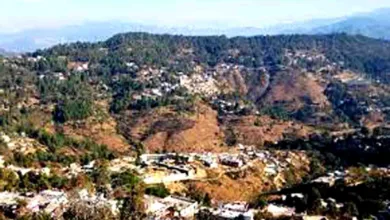Sixty Nine on the Environment

Monday, 08 November 2021 | Lokesh Ohri | in Guest Column
HILLBILLY
 Lokesh Ohri
Lokesh Ohri
In the ongoing COP26 climate talks in Glasgow, India’s prime minister has announced an arguably delayed yet surprising target of 2070 as the year by which the country will achieve net zero carbon emissions. While the target may appear ambitious, it overshoots by two decades the time by which scientists say the world must arrive at net zero, to avert catastrophic climate impacts. Nevertheless, world leaders have applauded that perhaps for the first time ever, we stand committed to something on emissions and that the PM is promising that India would increase the share of renewables in its energy mix from about 38 per cent last year to 50 per cent by 2030.
While the intent of these statements is laudable, the joke may be on all of us Indians, that the meteoric rise in fuel prices are in fact a part of government strategy to cut carbon emissions and achieve this ambitious target of getting back to renewable sources of energy, the most significant among these being muscular energy. When fuel becomes unaffordable, carbon emissions will cease automatically, seems to be the logic at work. Jokes apart, if we are serious about this commitment, even though fifty years hence, India must start acting now. Our intent will only be visible through our actions.
Here, I will not talk about whether this target is achievable or realistic, but rather focus on what is happening at ground-zero in the Himalayan state of Uttarakhand to show our intent or seriousness on the environment. Perhaps no other state of India has borne the brunt of destructive development as this hill state, in the recent past. Most Indians would remember that the prime minister’s government rode to triumphant power on his efforts to rebuild the pilgrimage site of Kedarnath, which had borne the brunt of destructive floods in the year 2013. The rebuilding of Kedarnath has been accompanied by the building of the all-weather road in these fragile and young mountains. The establishment argues that this is being done, keeping in view the threat our neighbour China poses to our borders in the Himalayas.
Whatever the reasons, the mountains are witnessing an unprecedented rush of building road, railway lines and helicopter ports across the mountains, mainly in use for pilgrimage and tourism. Most of these projects cut across pristine forests and ecological niches. Backed by the authority of the prime minister’s office, many of these projects have been rammed through without any environmental impact assessments or due diligence. Consequently, the state has witnessed some of the worst landslides and bridge collapses in the monsoon season just gone by.
In his speech to the world leaders at COP26, the prime minister of India said, “Instead of mindless and destructive consumption, we need mindful and deliberate utilisation,” citing consumer choices in areas from packaging to diet. “These choices, made by billions of people, can take the fight against climate change one step further,” he said. However, if the choices made by his regime in the recent past are anything to go by, this clearly appears to be a case of one step forward and three steps backward. The manner in which our government is promoting the auto industry, the packaged foods industry and large scale construction, is frightening, to say the least.
Consider the case of the all-weather roads to the Char Dham pilgrimage sites in the state and the prime minister’s ambitious mission to clean the river Ganga. The two projects can be described as a classic case of the figure of 69. While one spends crores of public money on the cleaning of the river and improving its ecology, the other as quickly undoes any gains whatsoever in this regard by dumping debris into the river, as it flows through the high mountains. While scientists believe that it is imperative to conserve and plant more forests along the river and its tributaries, the all-weather road project continues to destroy the remaining pristine forests along the river.
The High Court of Uttarakhand has repeatedly expressed its concern on pollution in Ganga and other rivers like Kosi, Rispana and Bindal. Research is pointing to the rapidly increasing groundwater depletion along Ganga owing to depletion in the Gangetic aquifers on the sides that feed groundwater seepage. They have warned that predictions suggest that the average groundwater contribution to the Ganga can substantially decrease in future and coupled with predicted climate change and dwindling of the Himalayan glacial retreat, the future situation can be catastrophic, raising a question mark on the very existence of Ganga. Now, how can one clean a river when its feeder rivers like Bindal, Rispana and Chandrabhaga, flowing through cities such as Dehradun and Rishikesh continue to bring in sewerage?
According to rough estimates, roughly 12,000 springs of the nearly 60,000 of Uttarakhand’s mountain springs have dried up. In March last year, the National Green Tribunal (NGT) sought responses from the Uttarakhand Government and the National Biodiversity Authority, following a petition stating that the natural hot springs in the state were drying up. A study by the Wadia Institute of Himalayan Geology which showed that the natural springs were becoming extinct was cited.
But perhaps the most frightening of all is the prospect of the central government fast-tracking hundreds of proposed hydropower projects in the Alaknanda, Bhagirathi, Yamuna, Sharada and Ramganga basins in Uttarakhand. According to the website, sandrp.in, the Government of Uttarakhand has plans to build a total of 337 hydropower projects with a total capacity of 27,191.89 MW. About 124 of these projects are in the Alaknanda basin alone, and the largest capacity is proposed to be in the Sharada basin. If this governmental dream is realised, it would only ring the death bell of Himalayan ecology, along with the Ganga, already under severe strain of human interference. What is more, with this all the tax payer’s money being pumped into reviving the Ganga and Yamuna rivers is likely to go down the drain. Is this not, then, an odd 69 situation wherein one wing of the government appears to be undoing what the other is attempting? Does it even show any intent on repairing our damaged ecology?
The US, Great Britain and the European Union have set a target date of 2050 to reach net zero, by which point they will only emit an amount of greenhouse gases that can be absorbed by forests, crops, soils and nascent carbon capture technology.China and Saudi Arabia have both set targets of 2060, but critics say these are largely meaningless without tangible action now. Quite true for India too, because our actions on the ground do not seem to suggest any seriousness on achieving any kind of goal. If we really mean something on this count, we must prepare a comprehensive policy of protecting our forests, preventing any further construction through our forests, switching to renewable sources, and promoting cycling and walking over cars as a means of transport. We must stop damming our rivers and we must stop mass transit and tourism from ruining the Himalayas.
(The writer is an anthropologist, author, traveler & activist who also runs a public walking group called Been There, Doon That? Views expressed are personal)






